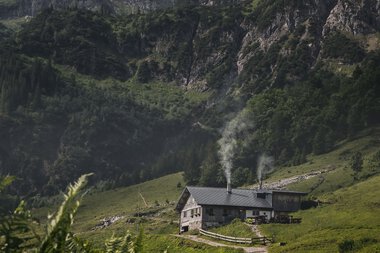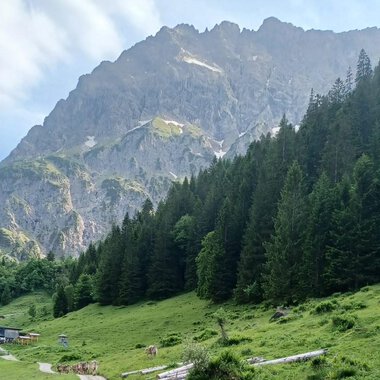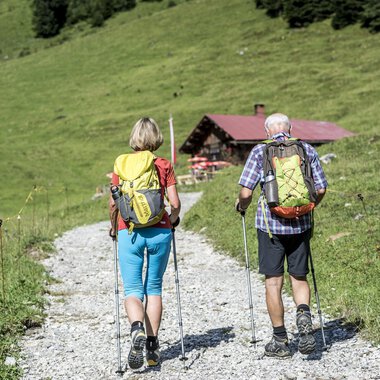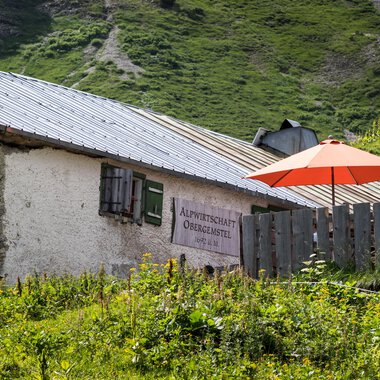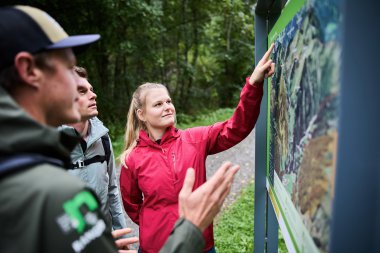Romantic side valley Between the peaks in Gemsteltal valley
Once you leave the forest around the gently babbling Gemstelbach stream behind you, a breathtaking view of the picturesque Gemstel Valley opens up. Idyllic paths on both sides of the stream lead deeper into the romantic valley, which stretches between the steep wooded slopes and the imposing peaks of the Widderstein, Walser Geißhorn, Elfer and Zwölfer. Passing three farmed alps, the path finally becomes steeper and winds its way up in serpentines past a rushing waterfall. At the foot of the highest mountain in Kleinwalsertal, another refreshment stop awaits you – and finally the Gemstel Pass, over which goods were transported in the Middle Ages.
Gemsteltal valley at a glance
Nestled in the highest mountains of the Kleinwalsertal, the Gemsteltal is a real highlight for hikers and connoisseurs. From the cozy Mittelberg district of Bödmen, you can set off on an adventure – whether on foot or on two wheels, the valley has something for everyone. The trail meanders along the babbling Gemstelbach stream, past rustic alpine huts such as Gemstel-Schönesboden, Bernhards Gemstel and the two cozy Gemstel huts further up.
The circular tour around the Widderstein is particularly attractive, offering spectacular views of the surrounding mountains and neighboring Hochkrumbach. If you prefer something more challenging, you can climb the summits of the Großer Widderstein or Geißhorn and be rewarded with breathtaking panoramas and altitude gains.
Families also get their money's worth: the hiking trail is child-friendly and even accessible with a mountain buggy. In winter, the atmosphere here is quiet and peaceful - the huts are closed and the hiking trails are not groomed, but for snowshoe hikers and ski touring fans, the Gemsteltal valley is transformed into a winter paradise.
Refreshment stops for the hunger in between huts in the gemstel valley
Experience nature consciously Protection and biodiversity in the Gemsteltal valley
The Gemsteltal valley is not only a popular hiking area, but also an important natural habitat. The forests around the alpine huts offer protection from avalanches and have remained largely untouched by man. They consist not only of the old spruce trees typical of the area, but also partly of sycamore maple. There are also silver fir, birch, mountain pine and rowan trees. Birds of prey find ideal breeding grounds in the rocky niches of the Bärenkopf. The black and great spotted woodpeckers provide the forest birds with a large number of caves. The forests around Schönesboden show how unlogged windthrow areas can naturally develop into valuable retreats for wildlife. Every step you take with mindfulness helps to preserve this natural beauty.
all information about the initiative

